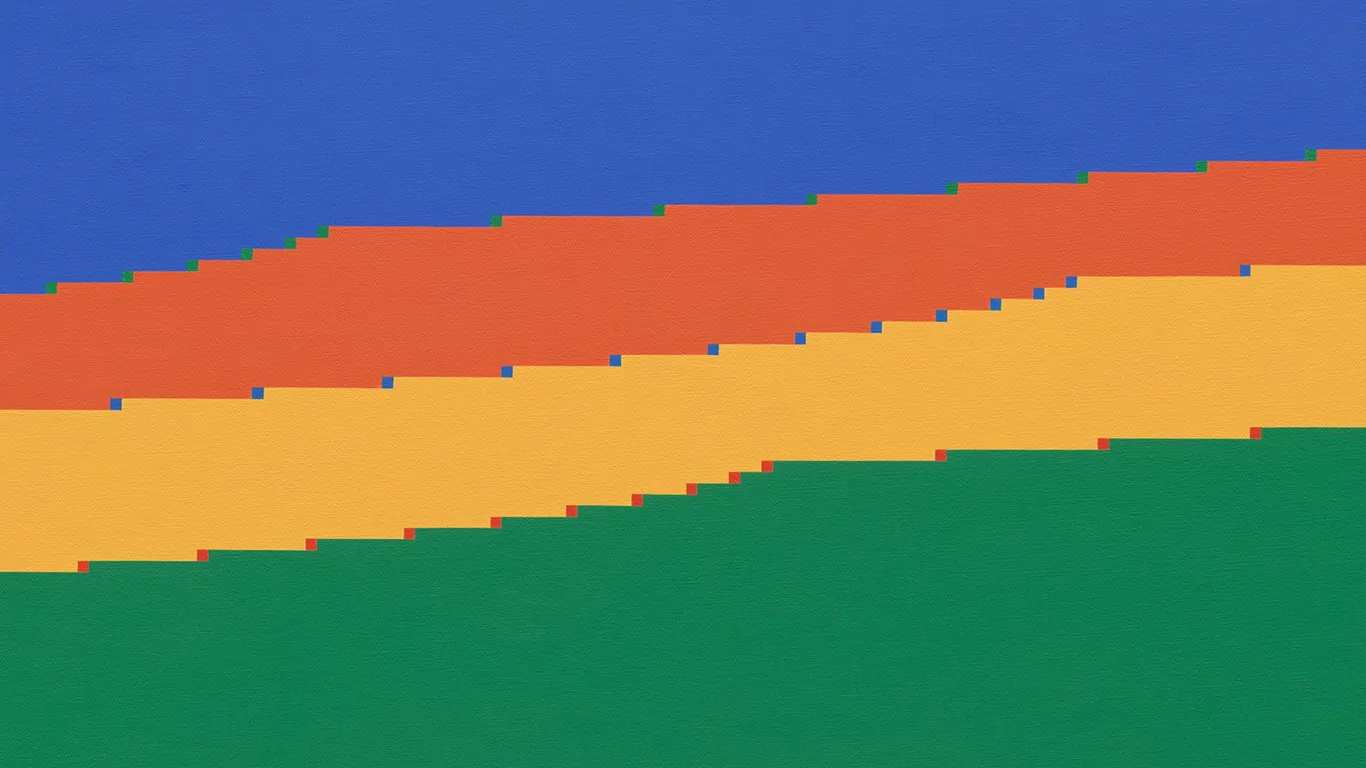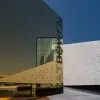Verena Loewensberg at Hauser & Wirth London
25th February, 2025 – 17th April, 2025
Hauser & Wirth London
23 Savile Row
London W1S 2ET
The Swiss artist Verena Loewensberg (1912–1986) was a central figure in the Zurich school of concrete artists, a movement that sought to distill painting into pure form and precision. She was also its only female member, working alongside Max Bill, Camille Graeser, and Richard Paul Lohse.
This spring, Hauser & Wirth presents the first solo exhibition in the United Kingdom devoted to Loewensberg, offering a rare opportunity to consider her legacy outside the framework of the movement she helped shape. The exhibition, which spans works from the 1960s through the 1980s, highlights a period in which the artist departed from the rigid formalism of concrete art. Engaging with the influences of colour field painting, hard-edge abstraction, and minimalism, Loewensberg developed a visual language defined by structural clarity and an instinctive sense of colour.
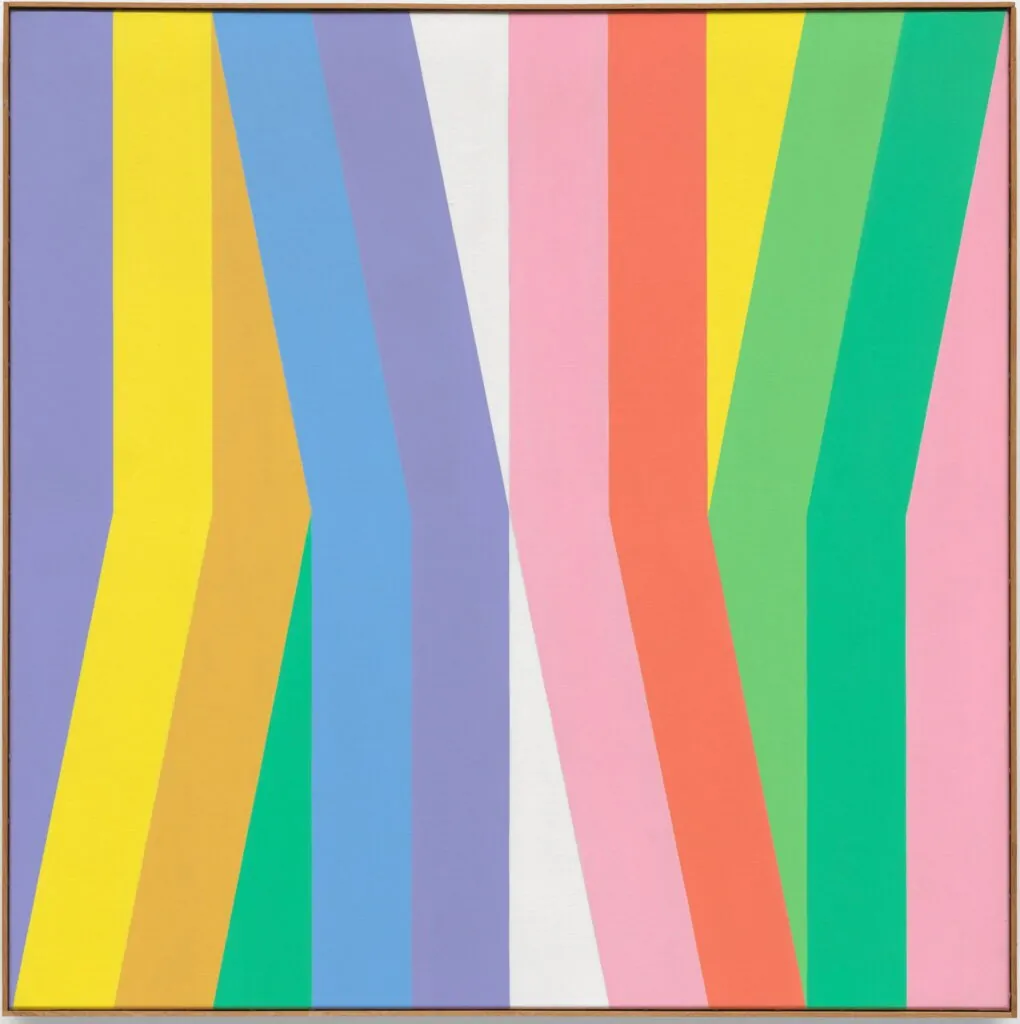
Oil on canvas, 101 x 101 cm / 39 3/4 x 39 3/4 in.
Photo: Alex Delfanne
Included in the exhibition is an early, dynamic painting from 1957, along with the only sculpture Loewensberg ever produced and a wallpaper design drawn from her extensive engagement with applied arts. The show has been organized in collaboration with Henriette Coray Loewensberg, president of the Verena Loewensberg Foundation, and Lionel Bovier, vice president of the foundation and director of MAMCO in Geneva.
A Career Shaped by Abstraction and Design
The exhibition opens with a wallpapered installation, an homage to Loewensberg’s formative years in applied arts. In 1927, she began studying weaving, embroidery, design, and colour theory, disciplines that informed her approach to abstraction throughout her career. Like Sonia Delaunay and Sophie Taeuber-Arp, she worked across art and design, insisting on the integration of geometry into everyday life.
A reproduction of one of her early wallpaper designs serves as a backdrop for a 1957 oil painting, where Loewensberg explores the grid as both structure and a site of disruption. This early composition anticipates the freer, more intuitive approach that would emerge in her later works.
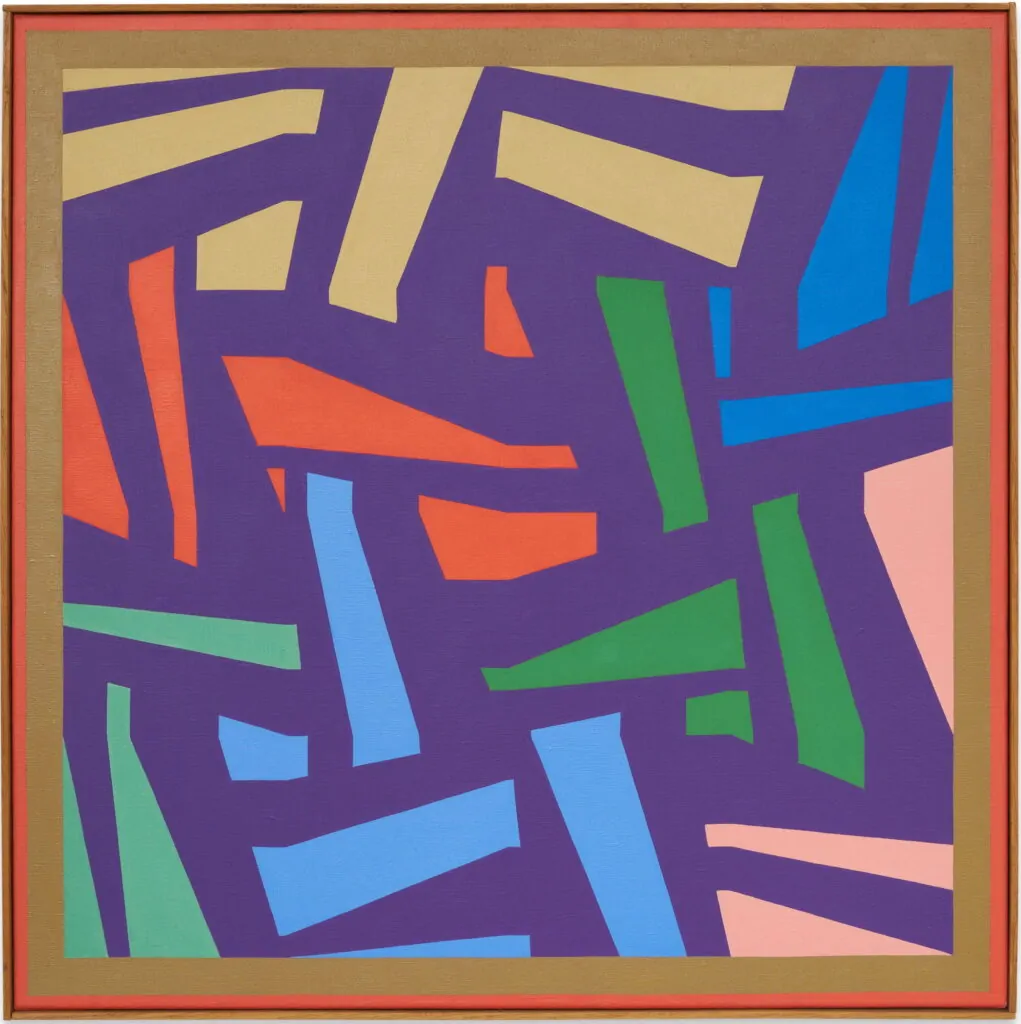
Oil on canvas, 67 x 67 cm / 26 3/8 x 26 3/8 in. Photo: Jon Etter
© 2025, Verena Loewensberg Stiftung, Zürich
By the mid-1960s, as concrete art remained the dominant aesthetic in Switzerland, Loewensberg’s paintings reflected a growing engagement with international movements. Works from 1967, for instance, reveal her technical precision in freehand painting. Working from preparatory sketches, she mapped out compositions in pencil before executing them in paint, balancing meticulous control with an increasingly instinctive application of colour. In several paintings, white emerges as an active force, no longer a neutral backdrop but a central element in dynamic, circular compositions.
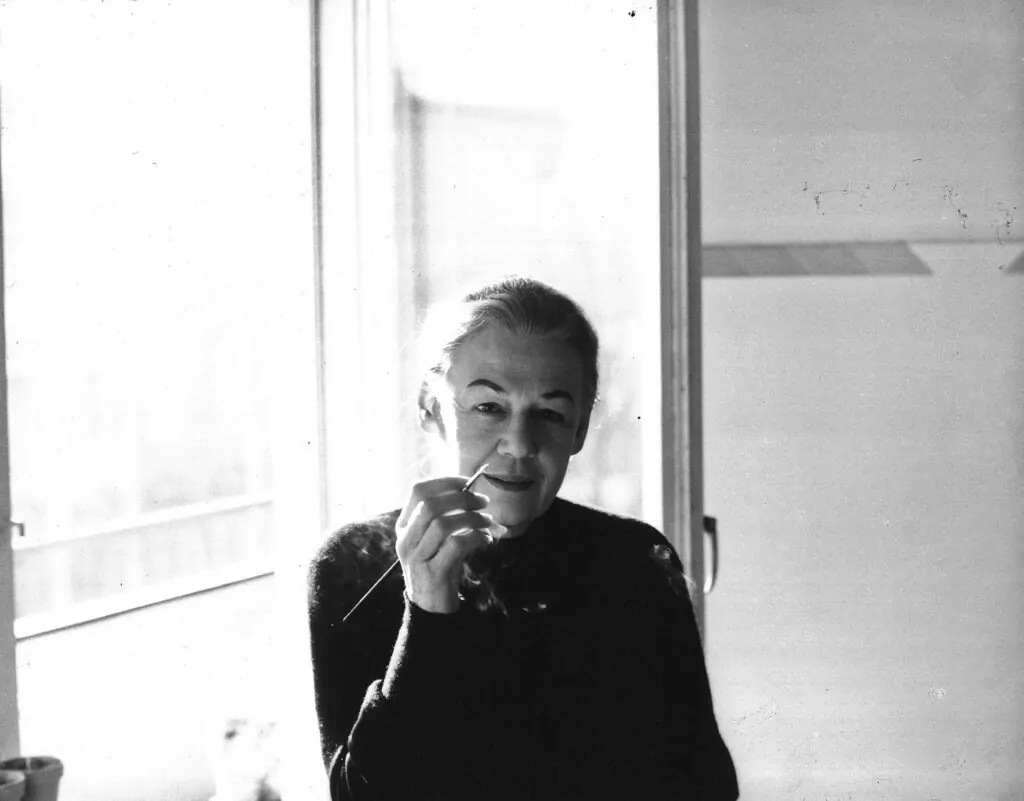
Photo: Stephan Coray, Zurich
© 2025, Verena Loewensberg Stiftung, Zürich
Though closely associated with the Zurich concretists, Loewensberg pursued an independent artistic path. In 1977, she described this independence succinctly:
“It was as if I were a bird that had to learn to fly by itself.”
Verena Loewensberg
A Language of Colour and Form
In her later years, Loewensberg’s paintings became more atmospheric, a quality she referred to as Stimmung, a German term that conveys tone, mood, and ambience. The exhibition includes a selection of two-toned paintings from the 1970s and 1980s, in which closely related hues are layered to create subtle, monochromatic compositions.
A significant turning point came in 1980, when Loewensberg traveled to Sicily to visit the Greek temples. This journey sparked a new series of paintings that abstracted architectural forms into elemental shapes. The exhibition also features the only sculpture she ever created, completed in 1982—a construction of five paired parallelepipeds in wood. One of the rare instances in which Loewensberg’s work makes reference to existing structures, the piece underscores her deep engagement with form and balance.
Despite the rigor of her compositions, Loewensberg remained notably private about her art. She left behind no theoretical writings, and her preparatory sketches were never intended for public view. By declining to title her works, she resisted interpretation, allowing each painting and sculpture to stand on its own terms. This refusal to contextualize her own art may have been a deliberate strategy to avoid the marginalization that often accompanied discussions of female artists in her time.
A Legacy Reconsidered
Loewensberg received long-overdue institutional recognition in 1981, when Kunsthaus Zürich mounted a retrospective—its first dedicated to a woman artist. Posthumous exhibitions have since taken place at:
- Aargauer Kunsthaus, Aarau (1992)
- Haus Konstruktiv, Zürich (1998, 2006)
- Kunst Museum Winterthur (2012)
- MAMCO, Geneva (2022) – a major retrospective
At a time when women’s contributions to 20th-century abstraction are being reexamined, this exhibition offers a fresh perspective on Loewensberg’s singular vision—one that resists categorization yet remains rooted in a profound understanding of colour, form, and structure.
Verena Loewensberg at Hauser & Wirth London opens on the 25th of February, 2025 until the 17th of April, 2025 at Hauser & Wirth London
©2025 Hauser & Wirth


